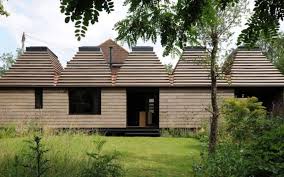Cork, a material we often see as wine bottle stoppers, is now being praised as one of the most eco-friendly and renewable resources on Earth. But cork’s story is not just about bottles – it has a long history, multiple uses, and a big role in fighting climate change.
Cork’s Long and Interesting History
Many people don’t know that cork has been used for thousands of years. Around 3000 BC, it was part of fishing gear. Later, in ancient times, cork was used in footwear, house roofs, and even in shipbuilding. Its strength and resistance to rot made it perfect for use in harsh conditions.
Today, cork is not just a part of history – it’s part of our sustainable future.
Where Does Cork Come From?
Cork comes from a special tree called the cork oak. This tree mainly grows in Mediterranean Europe and Northwest Africa. Cork is taken from the outer bark of the tree – the process is gentle and does not harm the tree.
In fact, the trees are not cut down. Only the bark is removed, and only after the tree is about 25-30 years old. After that, the bark grows back, and it can be harvested again every 9 to 12 years. A single cork tree can live up to 300 years, and give cork many times.
How Cork Helps The Environment
What makes cork truly special is its environmental benefit. When the bark is removed, the tree begins to absorb more carbon dioxide (CO₂) from the air. This helps in reducing global warming.
Cork is also 100% biodegradable. It can be reused and recycled easily. After harvesting, cork is kept outside in natural air, sunlight and rain – this improves its quality naturally, without chemicals.
Amazing Qualities of Cork
Cork is not just eco-friendly – it also has some amazing properties:
- Waterproof
- Fire-resistant
- Lightweight and elastic
- Good for soundproofing
- Natural and safe
Because of its unique structure, cork is filled with tiny cells that contain air-like gas. This makes it buoyant, perfect for floating objects, and also great for insulating homes.
Cork as Insulation – A Smart Use
One of the best modern uses of cork is as home insulation. After cork is taken from bottles, it can be crushed and shaped into insulation blocks using steam. Cork sticks together naturally, so there’s no need for harmful glues.
Insulating your home with cork will save electricity, reduce your carbon footprint, and also block noise – it can absorb up to 70% of sound!
Zero Waste Material
One of the most amazing facts is that nothing from the cork tree goes to waste. Whether it is used for bottle stoppers, flooring, walls, or fashion items, every part of the cork is used.
That’s why cork is now called one of the planet’s most sustainable materials. With more people becoming eco-conscious, cork is finding new uses every day.
Conclusion
Cork is more than just a bottle stopper – it is a gift from nature that can help solve modern problems like pollution, global warming, and waste. It grows naturally, is reused again and again, and causes almost zero harm to the environment.
As the world looks for greener options, cork stands out as a smart, strong, and sustainable choice. From building homes to making fashion products, cork can help us build a greener, cleaner future.
FAQs
What is cork made from?
Cork is made from the outer bark of the cork oak tree. It is collected without cutting the tree.
Is cork really eco-friendly?
Yes, cork is 100% natural, renewable, and biodegradable. It also helps the tree absorb more carbon after harvesting.
Where does cork grow?
Cork trees grow in Mediterranean Europe and Northwest Africa, especially in countries like Portugal, Spain, and Morocco.
Can cork be recycled?
Yes, cork can be easily reused and recycled, even after being used as a wine stopper.
How is cork used in homes?
Cork is used for flooring, wall insulation, and soundproofing. It helps reduce energy use and noise pollution.
Why is cork called sustainable?
Because it grows back after harvesting, is reused in many ways, and causes no waste, cork is called one of the world’s most sustainable materials.

